Announce
No announcement at this time.
Apply Proposals
Currently we accept research proposals only written in Japanese, but we prepare to accept those in English.
Usersoffice Mail: usersoffice @ lns.tohoku.ac.jp, Phone: +81-22-743-3435
Research Proposals
| YEAR | APPROVED PROPOSALS | - |
|---|---|---|
| 2016 | TBD |
Machine Schedule
Facilities/Beam Lines (Accelerators/Beam Spec)
Beamlines Summary
We provide beams by following three beam lines (as of 2015).
|
BEAM LINE I (RI Experiment) |
BEAM LINE II (Nuclear Physics Experiment) |
BEAM LINE III (Nuclear Physics Experiment) |
|---|---|---|
|
70 MeV Electron Linac ↓ Irradiation at #1Lab |
100 MeV Electron Linac ↓ 1.3 GeV Electron Synchrotron ↓ Irradiation at #2 Lab |
100 MeV Electron Linac ↓ 1.3 GeV Electron Synchrotron ↓ Irradiation at GeV Gamma room |
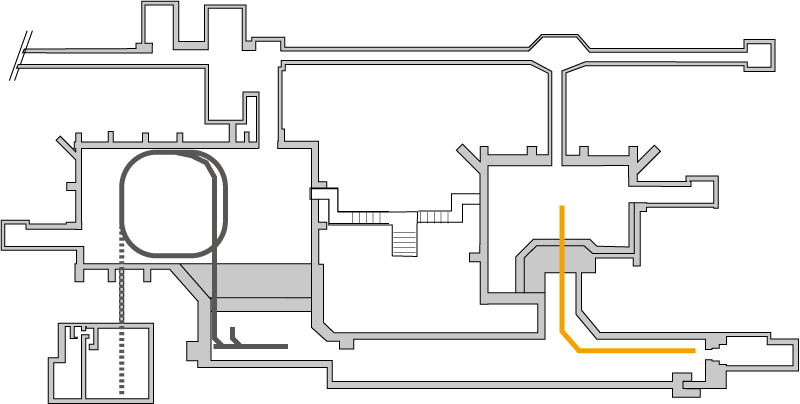
|
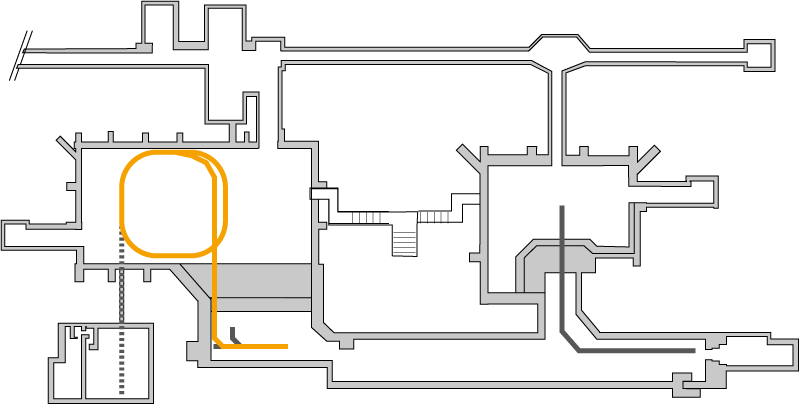
|
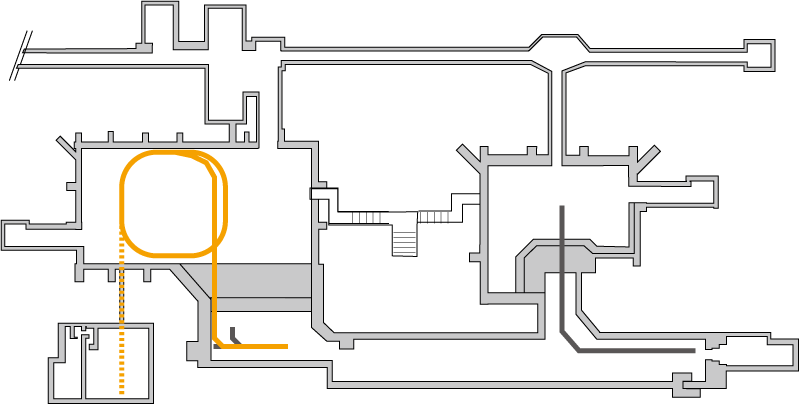
|
Accelerators and Beam properties
In ELPH, the electron and photon beam lines are provided for nuclear physics experiments and a radioactive isotope production. (Present Configuration (2015))High intensity electron linac
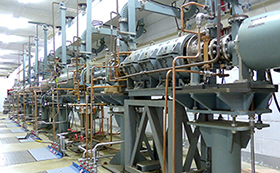
| Linac Energy | Modulator Repetition | Macropulse Peak Current | Macropulse Duration | Average Current |
| 50 MeV | 300 Hz | 〜130 mA | 3.0 µs | 120 µA |
| 30 MeV | 300 Hz | 〜100 mA | 3.0 µs | 90 µA |
Injector linac for BST
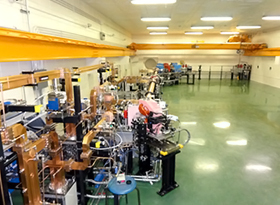
1.3 GeV Booster-STorage ring (BST)
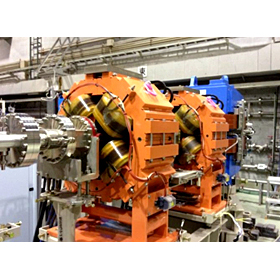
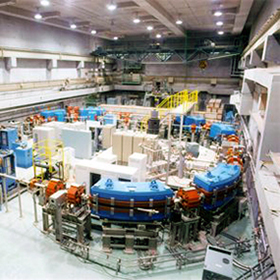
BST is an electron synchrotron which accelerates the electrons injected from the injector linac up to 1.3 GeV in maximum. The required energy to accelerate and store the electron beam is supplied by a 500 MHz rf cavity. By inserting a very fine carbon wire to the beam orbit of circulating electrons after the acceleration, high energy gamma rays are generated via bremsstrahlung. Two beam lines are operational to utilize such gamma rays. In a typical operation pattern, beam acceleration is immediately started just after the injection and finished within ~2 sec., and then stored electrons with ring current of 10~30 mA are consumed to generate the gamma rays over a duration of about 10~40 sec. Currently available operation energy is 1.3, 1.0 and 0.8 GeV, and typical ring current is ~10~30 mA.
| Injection Beam Energy | Injection Repetition | Ring Top Energy | Storage Beam Current |
| 90 MeV | ~0.05 Hz (typ.) | 0.8~1.3 GeV | ~30 mA |
Tagged photon beamline
The BST ring has two beamlines providing tagged photons. The typical properties of the tagged photon beams are summarized in the table:| Beam line | Energy Range (Rint Energy: 1.3 GeV) |
# of Bins | Intensity | Duty |
| BST-Tagger-I | 0.8 ~ 1.26 GeV | 160 | TBC | ~60% (NKS2) |
| BST-Tagger-II | 0.9 ~ 1.25 GeV | 116 | TBC | ~50% (FOREST) |
Photon beamline I
The photons are designed to be tagged with energies of 62%~98% with respect to the circulating electron energy of the BST ring. The number of tagging channels are 160. The details of the photon beam properties are under investigation.
Please contact to Dr. M. Kaneta (mail: kaneta@lambda.phys.tohoku.ac.jp).
Photon beamline II
The photons are designed to be tagged with energies of 62%~96% with respect to the circulating electron energy of the BST ring. The duty facto is approximately 50% (stable photon beam can be obtained for 8.5 s out of a 17 s cycle). The number of tagging channels are 116. The details of the photon beam properties are under investigation. Information before The Great East Japan Earthquake (March 11, 2011) can be obtained in a reference "The second GeV tagged photon beamline at ELPH"Reference: T. Ishikawa et al., Nucl. Instr. and Meth. A 622, 1 (2010).
Please contact to Dr. A. Tokiyasu (tokiyasu-at-lns.tohoku.ac.jp -at- should be replaced with @).
Positron/electron beamlines for testing detectors
The positrons and electrons, which are produced at a metal plate in front of the bending magnet RTAGX by the photon beam, are provided at three beamlines in the GeV-γ experimental hall. The positrons and electrons are momentum-analyzed with RTAGX, and the energy spread of them is approximately 0.5% . The beam profile and intensity depend on the beam energy, and the diameter of the beam is roughly 20 mm, the intensity is roughly a few kHz. The positrons (or electrons) at the -30 deg beamline can be focused with a triplet quadrupole magnets thanks to a KEK cooperation. The polarity of the magnets can be changed. The details of the photon beam properties after the earthquake are under investigation. Information before can be obtained in a reference "A detailed test of a BSO calorimeter with 100-800 MeV positrons",Reference: T. Ishikawa et al., Nucl. Instr. and Meth. A 694, 348 (2012).
| Beam | Beam line | Maximum beam energy |
| Positron / Electron | ± 30 deg | ~840 MeV |
| Positron | -23 deg | ~1000 MeV |
Radiation Safety
Registration of Radiation Worker
All users of ELPH have to be registered as radiation workers at home facility. Then, the users have to submit “Radiological Work Certificate” form. In addition, the users will take the Radiation Safety Training for ELPH, based on the Japanese law, before you enter the radiation controlled area at ELPH. The registration is valid during 1 fiscal year from April 1 through March 31.
Radiation Safety Training for ELPH
For details, please contact the radiation safety office at ELPH, the contact person of your research group, or your advisor at ELPH.
Maximum Permitted Activity of Unsealed Radionuclides
Staff
Hidetoshi Kikunaga (Nuclear and Radiochemistry)
Toshiya Muto (Radiation Protection Supervisor)
Shigeru Kashiwagi
Manabu Miyabe
Ken'ichi Nanbu
Yumi Sugawara
Contact
Radiation Safety Office
Address: Research Center for Electron Photon Science, Tohoku University
1-2-1 Mikamine, Taihaku-ku, Sendai, Miyagi 982-0826
Phone: +81-22-743-3411
Mail: kanri @ lns.tohoku.ac.jp
